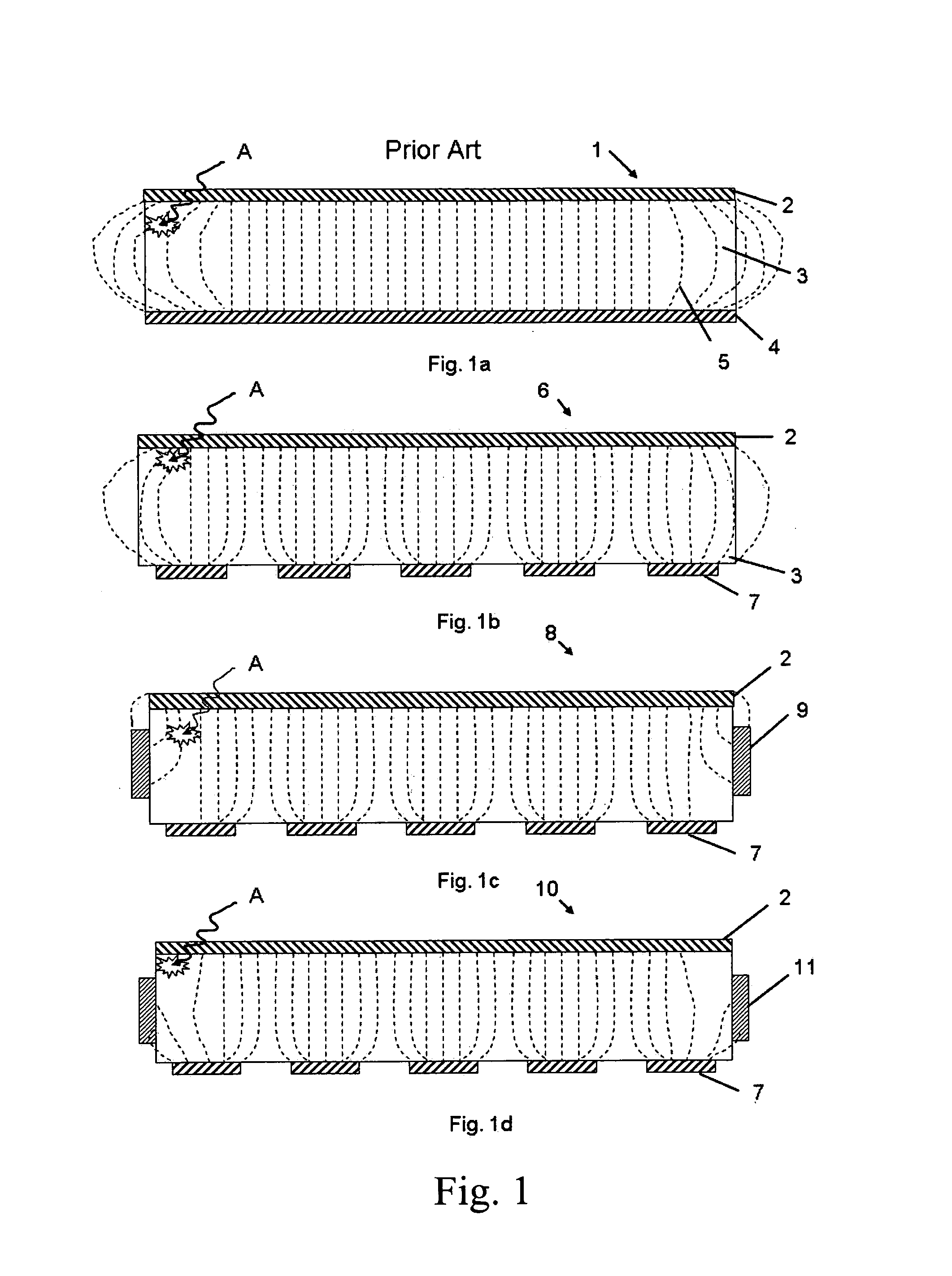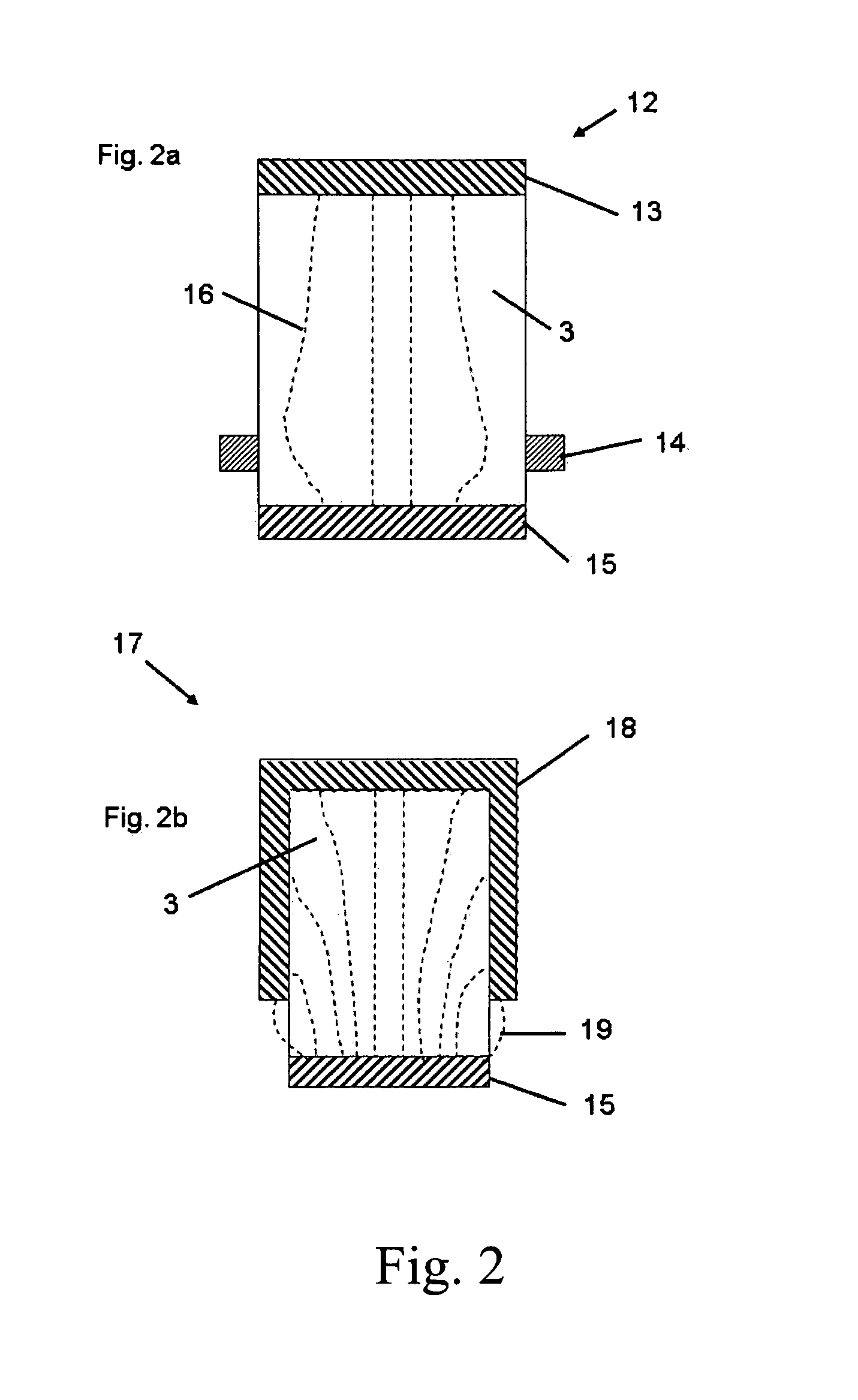Segmented radiation detector with side shielding cathode
a technology of side shielding cathode and radiation detector, which is applied in the direction of radiation controlled devices, instruments, sustainable manufacturing/processing, etc., can solve the problems of current unfavorable technology implementation, and achieve the effect of reducing electronic noise and good detector energy resolution
- Summary
- Abstract
- Description
- Claims
- Application Information
AI Technical Summary
Benefits of technology
Problems solved by technology
Method used
Image
Examples
exemplary embodiment performance
[0059]The previous unshielded results are compared to a radiation detector with the modification of side-shielded cathode embodiment of FIG. 9, with test results as shown in FIG. 7. The CZT detector configuration corresponded to the conventional baseline example for array and tile dimensions. Tile thickness was 5 mm, the anode array was 10×10 pixels, and the electrodes were gold, and the side insulator was Humiseal polymer, and the side portion extends 2.5-3 mm. The radiation source was Co-57; radiation energy 122 keV, bias voltage 500V. In general, a dramatic improvement in the FWHM energy spike on the outer pixels is demonstrated with improved peak counts. Both of these measures improve signal to noise and quality of derived signal. Improvements in charge collection efficiency result in improvements in both energy resolution and peak counting efficiency, as shown. The side-shielding cathode detector improves both outer corner pixels (typically affected the most by shielding) and a...
PUM
 Login to View More
Login to View More Abstract
Description
Claims
Application Information
 Login to View More
Login to View More - R&D
- Intellectual Property
- Life Sciences
- Materials
- Tech Scout
- Unparalleled Data Quality
- Higher Quality Content
- 60% Fewer Hallucinations
Browse by: Latest US Patents, China's latest patents, Technical Efficacy Thesaurus, Application Domain, Technology Topic, Popular Technical Reports.
© 2025 PatSnap. All rights reserved.Legal|Privacy policy|Modern Slavery Act Transparency Statement|Sitemap|About US| Contact US: help@patsnap.com



